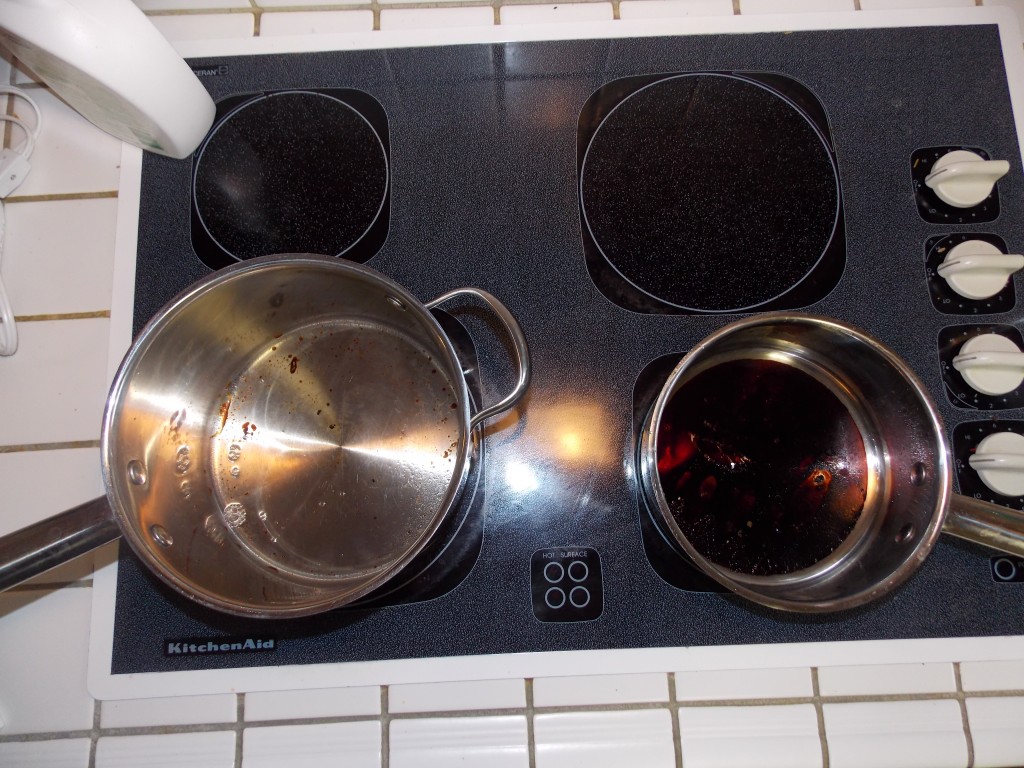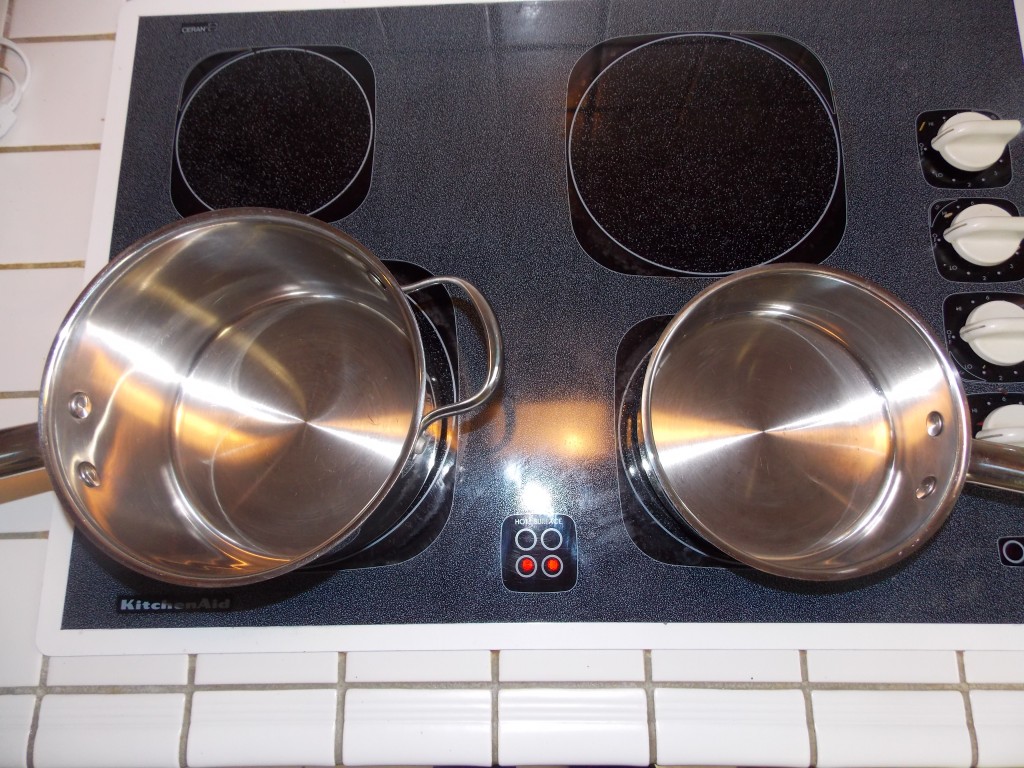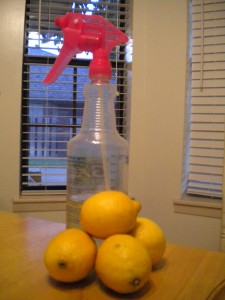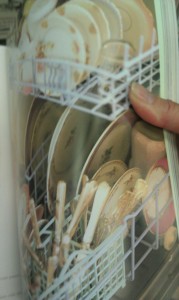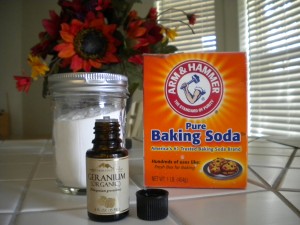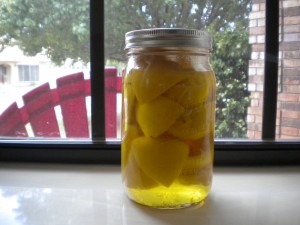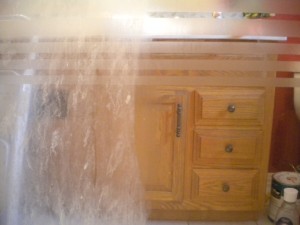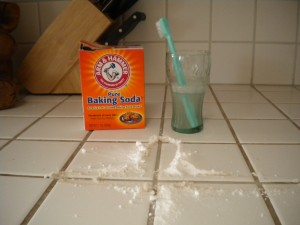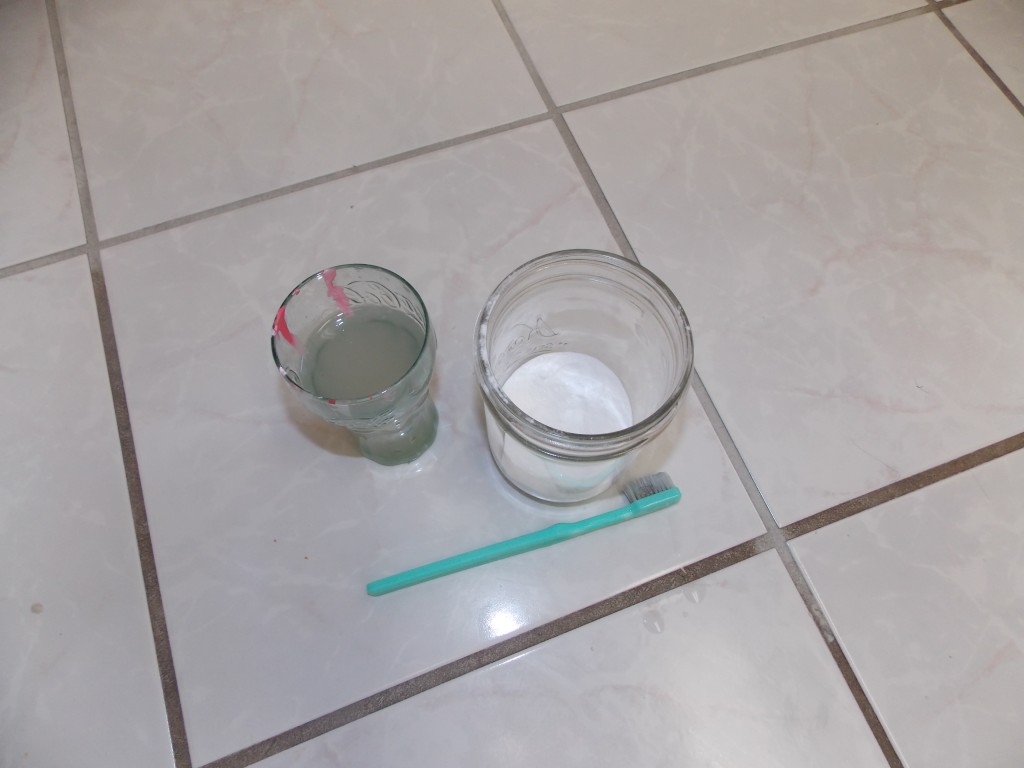
I love cleaning the grout on my kitchen floors. I know that probably sounds crazy but it’s true. It’s such a quiet job and it requires no thought what so ever. I just wish I would’ve started cleaning it sooner.
When I first moved into this house a year ago I thought the grout was supposed to be that dark (this is my first house with a tile floor and I just didn’t know any better). Imagine my surprise, then, when I spilled a little bit of paint on the grout two weeks ago and cleaned it up with a toothbrush and some baking soda and the dark grout turned white! Gross! All this time I was mopping my floors and thinking they were clean when there was probably years of dirt build-up in the grout.
I have a fairly large kitchen and eating area and it has taken me a while to clean them but I’m almost finished. I had thought about cleaning the grout with a steam cleaner, but after asking others who have tried using one to clean their grout, I decided not to (others complained that it didn’t do a deep down cleaning like they wanted and they ended up doing it by hand). So I decided to use a little bit of baking soda (with some spearmint essential oils to liven things up – including my mood), a toothbrush and some elbow grease. It turns out it’s not a lot of hard work, it just takes some time. I almost find it relaxing. I just do a small section at a time especially if I’m stressed out or just need to get away from a project I’m working on. It has the same effect on me as doing a word search, only when I’m finished I can walk in the kitchen and say “Dang! That looks good!”
What you need to clean your grout:
*Baking soda (I pour mine in a glass and mix with a few drops of my favorite essential oils but you can just pour it straight from the box).
*A hard bristled toothbrush
*A cup of water to rinse out the toothbrush
*A wet rag to wipe up your mess
Just sprinkle a little bit of baking soda onto the grout and scrub with the toothbrush. Rinse your brush out every few minutes. Wipe the area clean with a wet rag to remove the dirty water and baking soda. Wipe up the area frequently so the dirty water doesn’t settle back into the grout. For extra tough stains, put vinegar in spray bottle and spray it onto the baking soda that you’ve sprinkled onto the grout. After it bubbles, use the toothbrush to loosen the dirt and grime.
Happy Scrubbing!
